This information is for Queensland residents. Electricity bills and tariffs will vary state to state, so please keep this in mind when completing your research.
This blog forms part one of our Queensland Bill Hunter series, where we are on the lookout for the worst electricity bill in QLD. Think you might have the worst bill? Submit it to us here and we will review it, provide an analysis, and offer recommendations for improvement.
In this series, we are exploring five different bill types and tariffs:
Five Part Series
1. Flat rates and off-peak charges
2. Flat rates with demand charges
3. Commercial demand electricity bills
4. Electricity bills when you have a solar system
5. Electricity bills when you have a solar system and a battery
This blog offers an in-depth guide on how to read and understand residential flat rate electricity bills with demand charges.
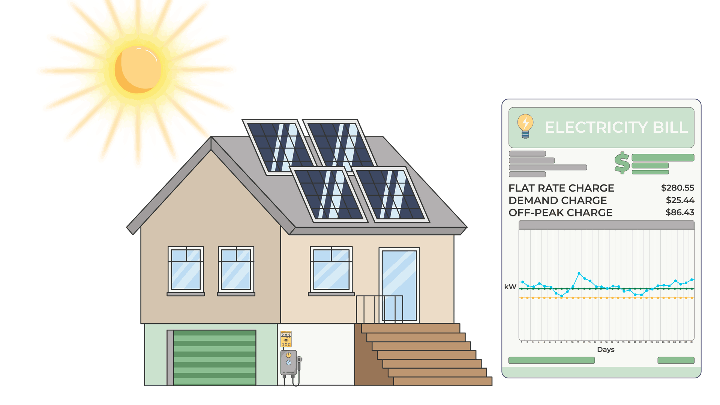
Flat rates are the most common electricity bill tariff you will find in residential households. Additional charges, such as your demand rate and off-peak rate, are also common.
We share two example electricity bills below to demonstrate how these types of bills can look. These bills belong to two customers who later had us install a solar energy system on their home. But first, let's explain what a flat rate is, what an off-peak rate is, and what a demand rate is.
Read more: Queensland electricity prices to increase by up to 22%
What is a flat rate electricity charge?
A flat rate, or single rate electricity bill, is a bill where you get charged for the electricity you consume in your property at one singular rate. This singular rate is applied to all general usage of electricity in your property.
This singular rate is a set rate of cents per kilowatt hour for the entire bill. This rate will not change depending on the time of day, time of use, or for the demand you're using on the bill.
What is an off-peak electricity charge?
An off-peak rate is an additional rate that is applied to the use of your hot water system. This is a separate charge to general usage, reserved for electricity used to heat your hot water unit. It is often referred to as a controlled load in your bill charges section.
Like the rate charged for your general usage, the off-peak rate is a flat tariff.
What is the demand electricity charge?
The demand charge on your electricity bill is where the retailer is charging you for the highest usage for the month. This highest usage charge is the instantaneous highest electricity use between 4pm-9pm. That highest instantaneous usage will then be charged to you over a 30-day period.
For example, if you average 5kW usage in your home every evening (4pm-9pm) in the month of January, but then on January 20th you decided to run all your appliances at once and use 10kW of electricity at 5pm, your electricity retailer would note that as being your highest point of energy usage. That 10kW usage is applied across the entire month and you are charged that instantaneous point multiplied by 30 days, even if you don't use 10kW of energy every evening.
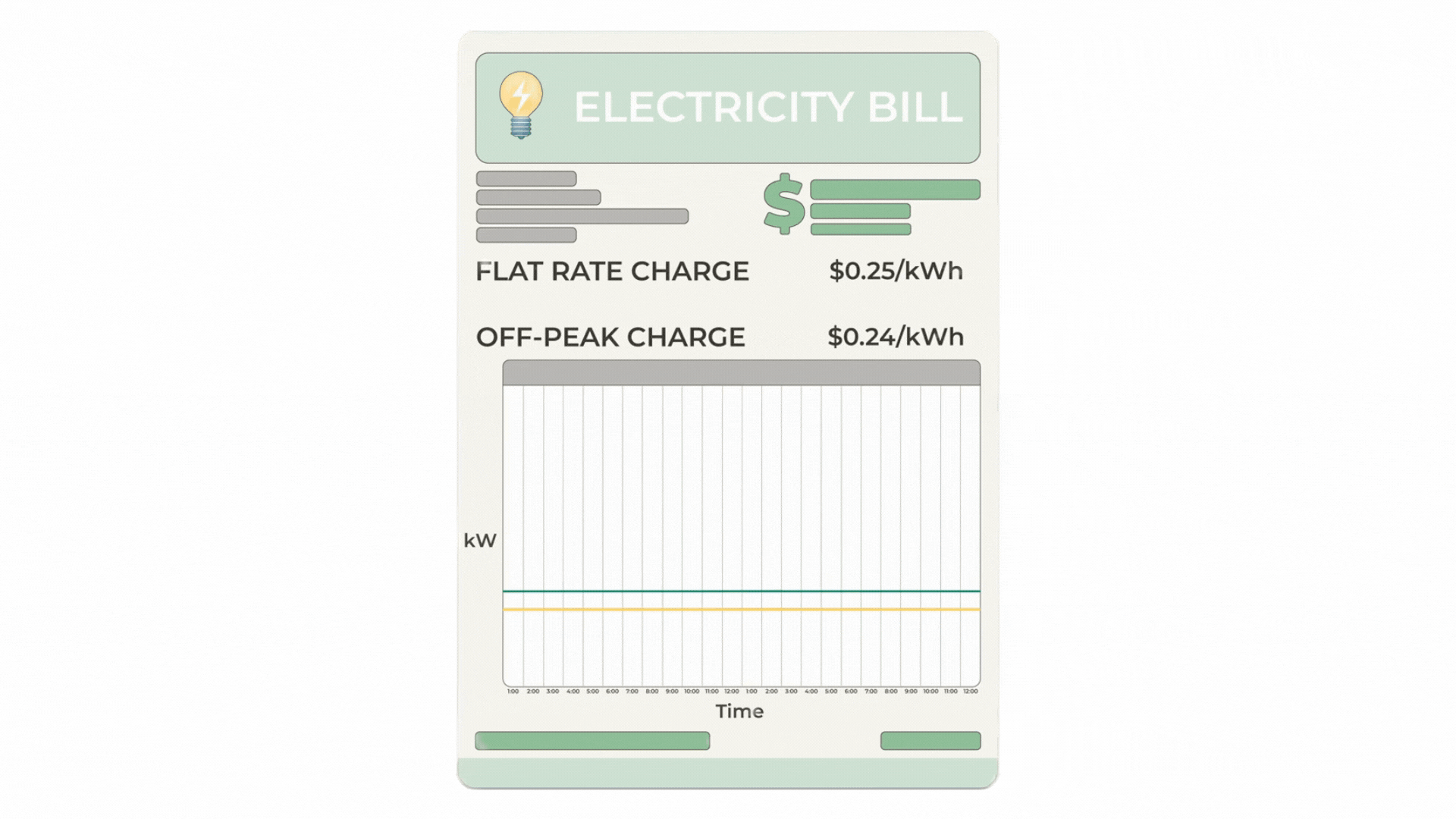 `
`
Example electricity bill 1
Flat rate with off-peak and demand charges
This is a real bill from one of our Queensland customers who was hoping to determine whether a solar energy system would be worthwhile installing on their property. Let's analyse this bill together to find out.
You're probably aware that electricity bills all look slightly different depending on the retailer, but all bills are broken down into sections. The most important section you need to pay attention to is the charge descriptions - keep scrolling to find out where this is and how to read it.
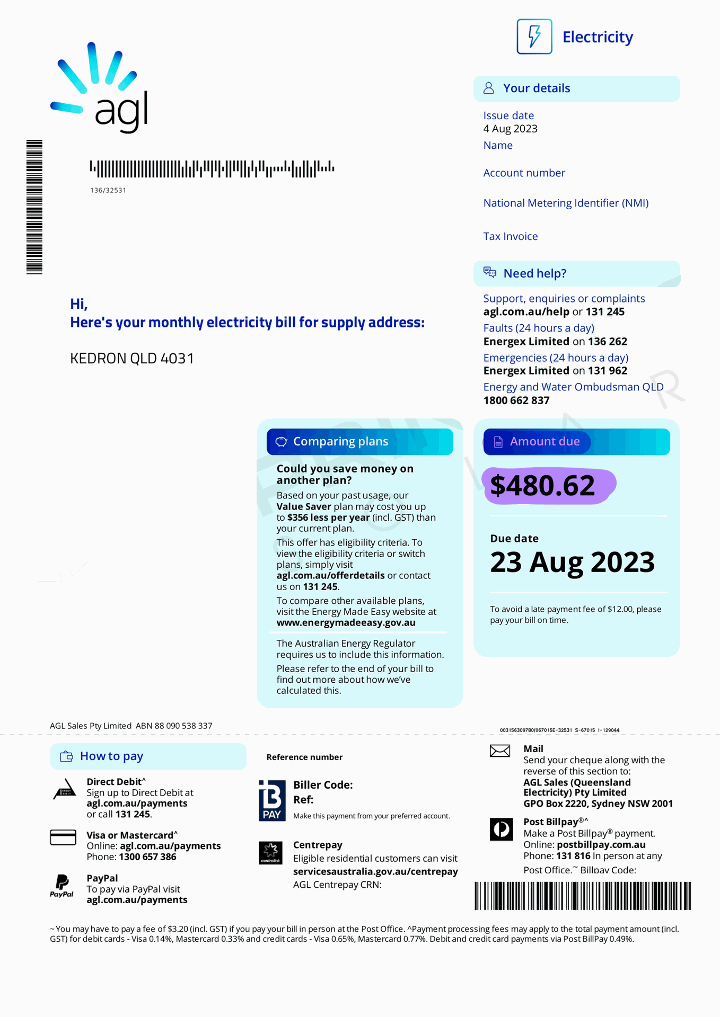
Page 1
Page one of this bill only displays account details and the total amount due. Other electricity retailers will also display the billing period and your energy usage summary, which is helpful to see how your usage compares with similar properties, to indicate how much electricity you are consuming, and whether or not you are using in excess.
The majority of people will look at the total amount due figure, pay the bill, and call it a day. But this figure doesn't show you any of the charges contributing to the total cost, rendering you blind to the most important aspects of your bill (what you're actually being charged).
There are many factors contributing to this total amount due, and we want to find out what. So, let's ignore the total amount due, and continue.
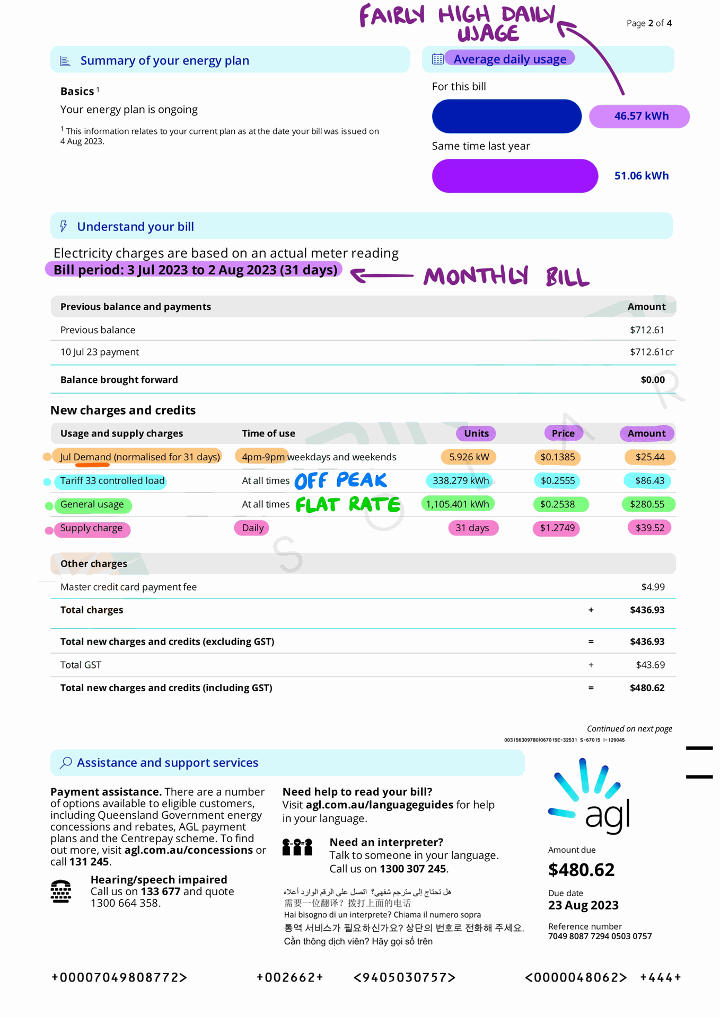
Page 2
Page two has everything we need to pay really close attention to. This is where you can see the breakdown of your charges. On this bill, this section is called 'Usage and Supply Charges'. At first glance, it can be quite confusing, so let's break it up to understand what's going on here.
This bill has four charges listed:
1. Jul demand (normalised for 31 days): this is the demand charge
2. Tariff 33 controlled load: this is the off-peak rate for your hot water system
3. General usage: this is the flat rate
4. Supply charge: this is the daily rate
This is a monthly bill, covering the 31-day period of July.
Let's look at their demand charge. This customer used 5.926kW of peak usage. This was their highest point of usage throughout the entire month of July between 4pm-9pm.
5.926kW is multiplied by their demand tariff of $0.1385 per kW, which is then multiplied by 31 days. This results in their demand charge of $25.44 for July.
As of January 2024, a demand tariff of $0.13 per kW is pretty good, and their usage during peak periods is not too bad. Overall, a charge of approximately $25 per month for demand usage is nothing to be too concerned about. If this customer really wanted to reduce that $25 charge, they would need to monitor the amount of kW they use between 4pm-9pm to reduce their kW units.
The next charge listed is the Tariff 33 controlled load, coming in at a total of $86.43 for the month. This is the customer's off-peak charge for their hot water system.
Then, the general usage, or flat rate, charge comes in at $280.55 - this is their charge for using electricity at all times of the day excluding the 4pm-9pm peak period and usage for the hot water system.
This bill is a little bit interesting - usually, the flat rate tariff is higher than the off-peak rate, but in this instance, it's the opposite. We can see the off-peak rate is $0.2555 per kWh, whereas the flat rate is $0.2538.
We are noting this because the off-peak charge on your electricity is 100% avoidable with the installation of a hot water controller. Considering that this customer is paying more for their hot water system than their regular electricity usage, this is the first thing we would recommend this customer address.
As of January 2024, the flat rate tariff of $0.2538 is not too bad, we are seeing rates as high as $0.35 to $0.50.
That being said, these electricity charges still have the potential to be reduced drastically. Continue reading to see our recommendations.
Read more: Pros and cons of solar energy in 2024
Example electricity bill 1
How to save money on this electricity bill
1. Completely eliminate the off-peak charge
The off-peak charge on your electricity bill is 100% avoidable. How? With a solar energy system and a hot water controller. Rather than relying on grid electricity to heat your hot water system, you can use excess solar energy produced by your system. This is achieved with a hot water controller or diverter.
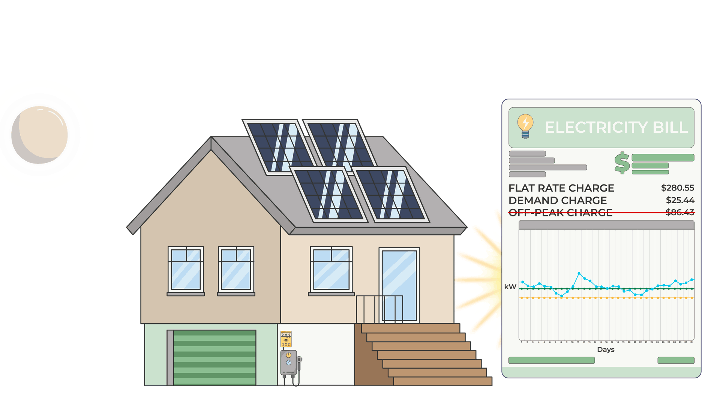
There are two mainstream options when it comes to hot water controllers. You can install a simple timer that will routinely heat your water system in the middle of the day when the sun is at its peak. Or, you can install a sophisticated control through your solar inverter via a meter, where we can optimise the unit to charge only with excess solar energy that your system produces.
By installing a hot water timer, you negate the need to use grid electricity to heat your hot water system, meaning that you can completely eliminate the off-peak charge on your bill. For this particular customer, this will save them approximately $85 per month.
2. Reduce general usage kWh by improving solar self-consumption
The key to maximising savings on your general usage charge is to use as much solar energy during daylight hours as possible. This is called solar self-consumption, and it is the most effective way to reduce your general usage charge and lower your solar system payback period.
Read more: How to improve your solar self-consumption with load shifting
To improve your solar self-consumption, you should aim to shift as much of your electricity usage to the daytime (as possible). For example, ensure you're using the washing machine, dishwasher, pool cleaner, temperature control, and other heavy energy users during the day. As soon as you start using these appliances at night, you are using energy from the grid, therefore increasing your general usage kWh and costing you money.
Read more: 5 ways to maximise your solar energy consumption
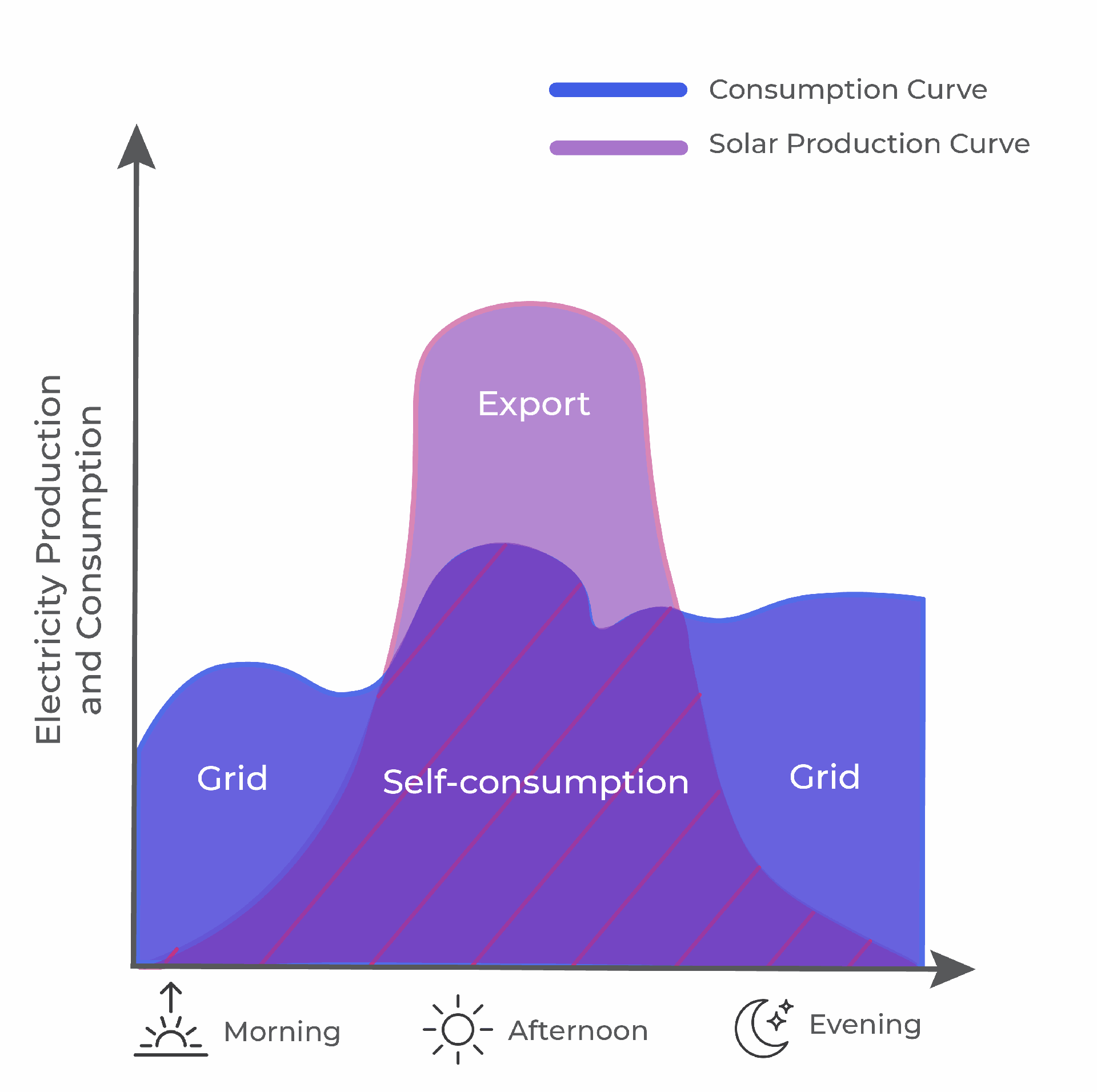
3. Eliminate the demand charge and general usage kWh by installing a solar battery
A home with a demand charge can really benefit from the addition of a solar battery. As the demand charge applies between the peak period of 4pm-9pm, your solar system alone won't be able to offset your usage as the sun sets.
Unless you have a large solar system facing west in summer, the only way to reduce your kW usage at this time is to either shift a lot of your usage to the day, or install a solar battery to offset your evening usage.
A solar battery allows you to store excess solar energy your system produces during the day so that you can access it at night. By using excess solar energy at night, you avoid pulling energy from the grid, reducing your general usage charge to $0. Pretty cool, right?
Not only does a solar battery attack your demand charges, but it will also reduce your general usage kWh and future-proof your property. Depending on the size of your system, your battery will continue to supply your home with energy overnight, on cloudy days, and can even provide backup protection in the event of a power outage.
Read more: Store your excess solar energy with a solar battery

However, solar batteries like Tesla Powerwall and SolarEdge Home Battery are still significant investments for many homeowners, and depending on how much your general usage charge and demand charge is per billing period, may not be worth it. The example above has a fairly low demand charge, but their general usage charge is quite high as they consumed a decent amount of electricity over the month. It's important to assess your electricity costs versus the payback period of an investment like a battery to determine whether or not it's worth it for your household.
Read more: Maximising solar energy with Tesla Powerwall
If your household uses a significant amount of energy and your general usage charge and/or your demand charge is exorbitant, then a solar battery may be a wise investment. The QLD Government is soon releasing a solar battery rebate for Queensland homeowners that you may be eligible for - learn more about it here.
Example electricity bill 2
Flat rate with demand charges
Now let's look at another electricity bill with flat rate charges and only demand charges (no off-peak). Again, this is one of our Queensland customers who sought a solar energy system to offset their high electricity costs - you'll see why their bill was so high!
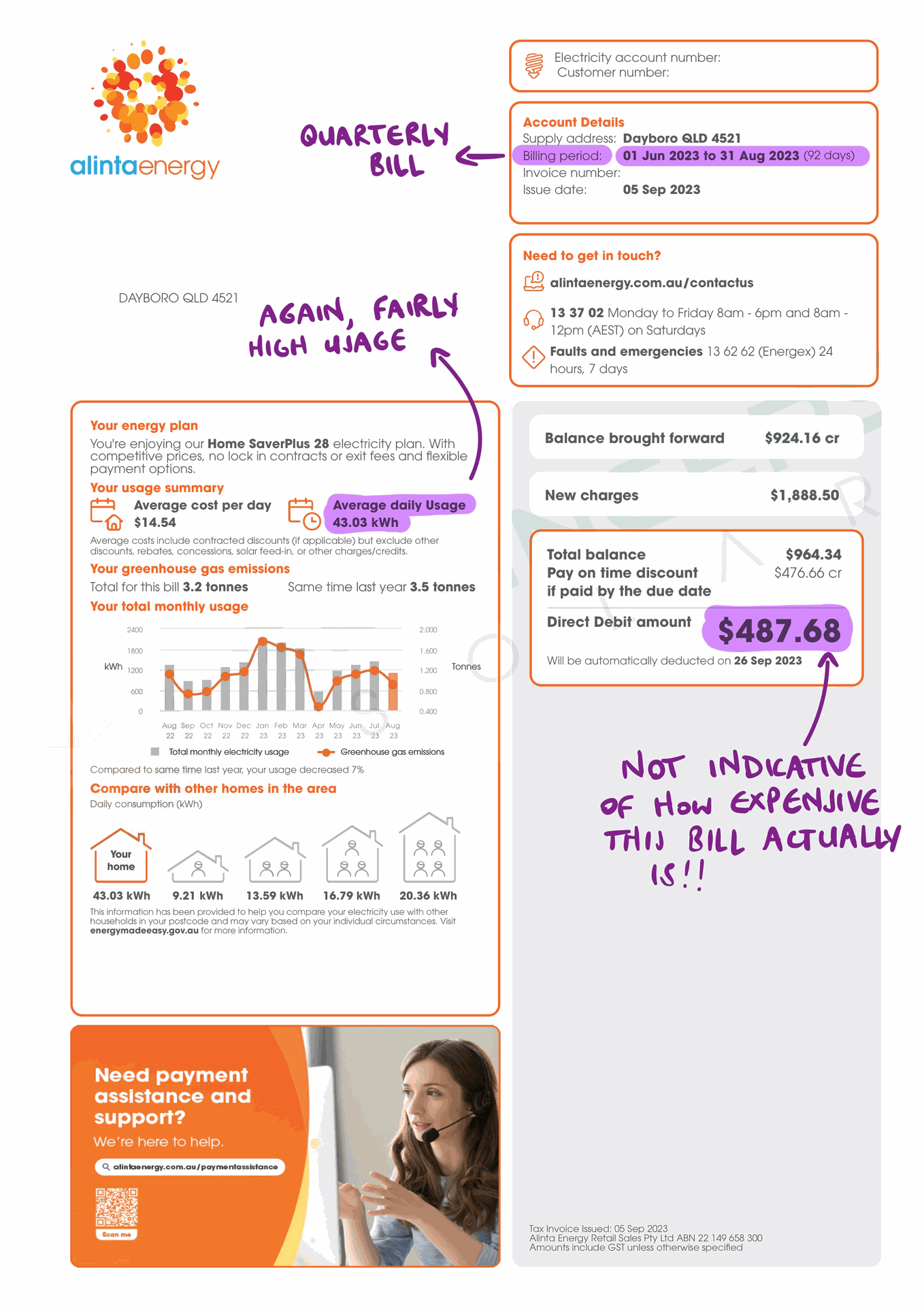
Page 1
Page one again displays the total amount due, this home's daily energy consumption in kWh, and the billing period.
This is a quarterly bill, and as you can see by the average daily use of 43.03kWh, this household uses a decent amount of electricity every day. Let's continue to page 2 so we can see where this usage is coming from and how they're being charged.
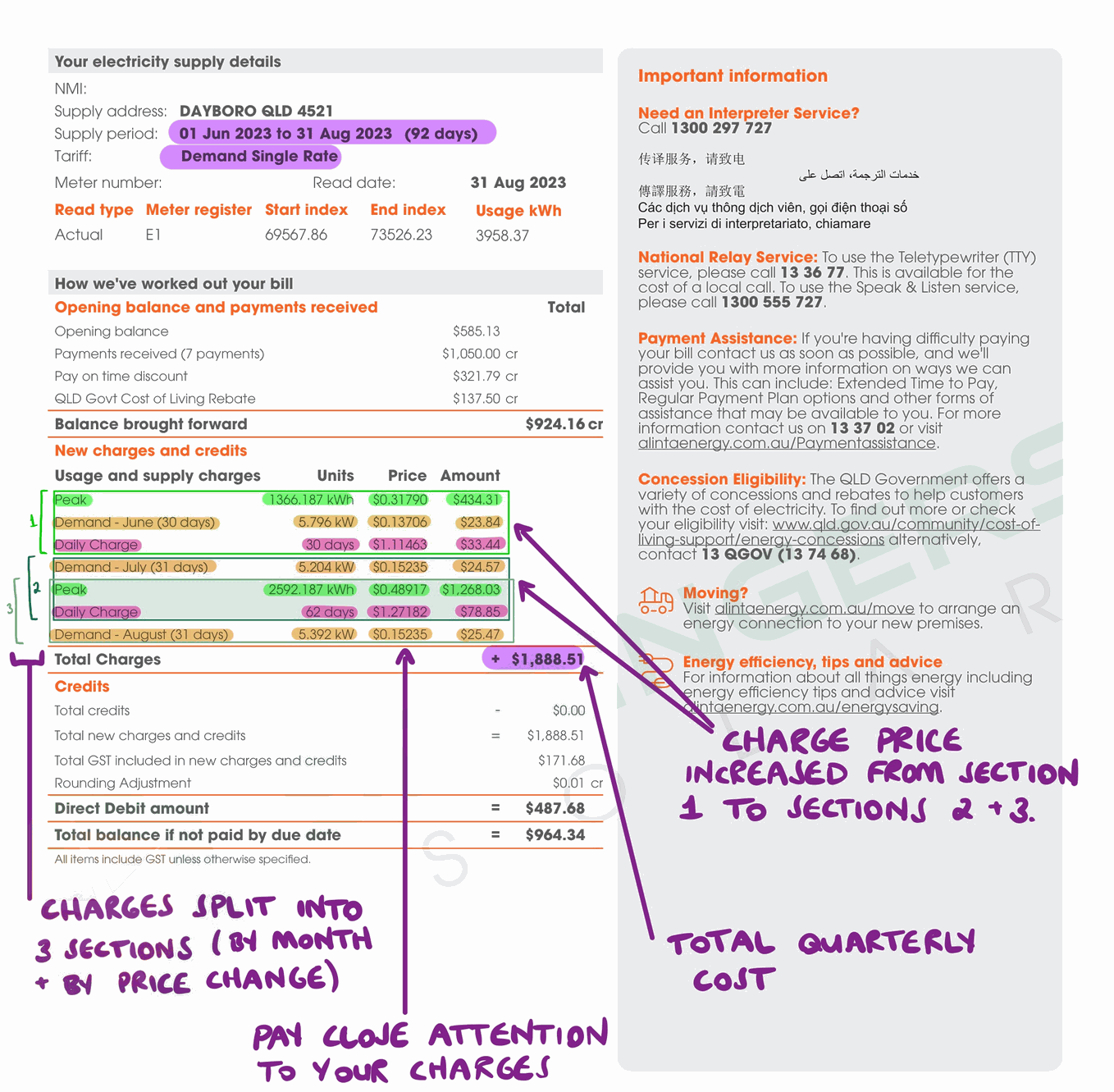
Page 2

Page 2 (zoomed in)
This bill is getting complicated, and you can see multiple demand charges, peak charges, and daily charges. Let's break it down.
First of all, we know this is a quarterly bill, which is why there are three demand charges - one for June, one for July, and one for August. We know they've split the demand charges this way because the retailer will take the highest instantaneous electricity use for the month and then apply that across a 30-day period.
This customer's demand usage was highest in June with a total unit of 5.796kW. They decreased their demand usage in July and August, but they were charged more... this is due to a demand charge increase that occurred from July. In June, their demand tariff was $0.137 per kW, but in July, this increased to $0.152. No one likes a rate increase, but this isn't too bad in the grand scheme of things.
But it gets worse. We can see this customer's flat rate (peak) in June was $0.317 per kWh. This is high, but if we look to July (section 2), their flat rate increased to a whopping $0.489 per kWh. This is a huge increase, and although their electricity usage didn't increase much from June to July, they are paying an additional $200 per month just for their general usage.
Note that the peak rate and daily charge are shared between sections 2 and 3 - this is because there was no rate change between July and August, so the retailer has grouped them on the bill. We've divided the peak usage and total amount by half to get an average between the two months (~$200 increase per month, ~$400 increase in total between June to July/August).
The daily supply charge even saw a small increase from June, rising from $1.11 per day to $1.27 per day.
There is no off-peak charge, meaning that the hot water system is run from either gas or is included in the general usage peak rate.
This electricity bill is prime for a solar energy system, even a solar battery, to massively reduce those electricity costs. We would also recommend that this customer shop around retailers to secure a better rate for their general usage - $0.48 per kWh is huge (one of the highest residential rates we've ever seen), and shopping around would be well worth the effort to bring those charges down.
Example electricity bill 2
How to save money on this electricity bill
1. Shop around for different retailers
With such a high rate, the first point of action is to shop around and see if your retailer will offer you a better rate and if not, shop around for another retailer.
If you can't reduce your rates and charges, installing a solar energy system (and a battery, if it's in the budget) would be an absolute given. With charges that high, the payback period and return on investment would be phenomenal.
2. Reduce general usage kWh by improving solar self-consumption
Exactly the same as the first example, if you have a solar system, you need to be running as much of your appliances and energy users during the day while the sun is shining and your solar system is offsetting the usage.
Shift your usage to the daytime as much as possible and you will reduce the kWh in your general usage, therefore saving you money. Below is an example of shifting your usage to the daytime:
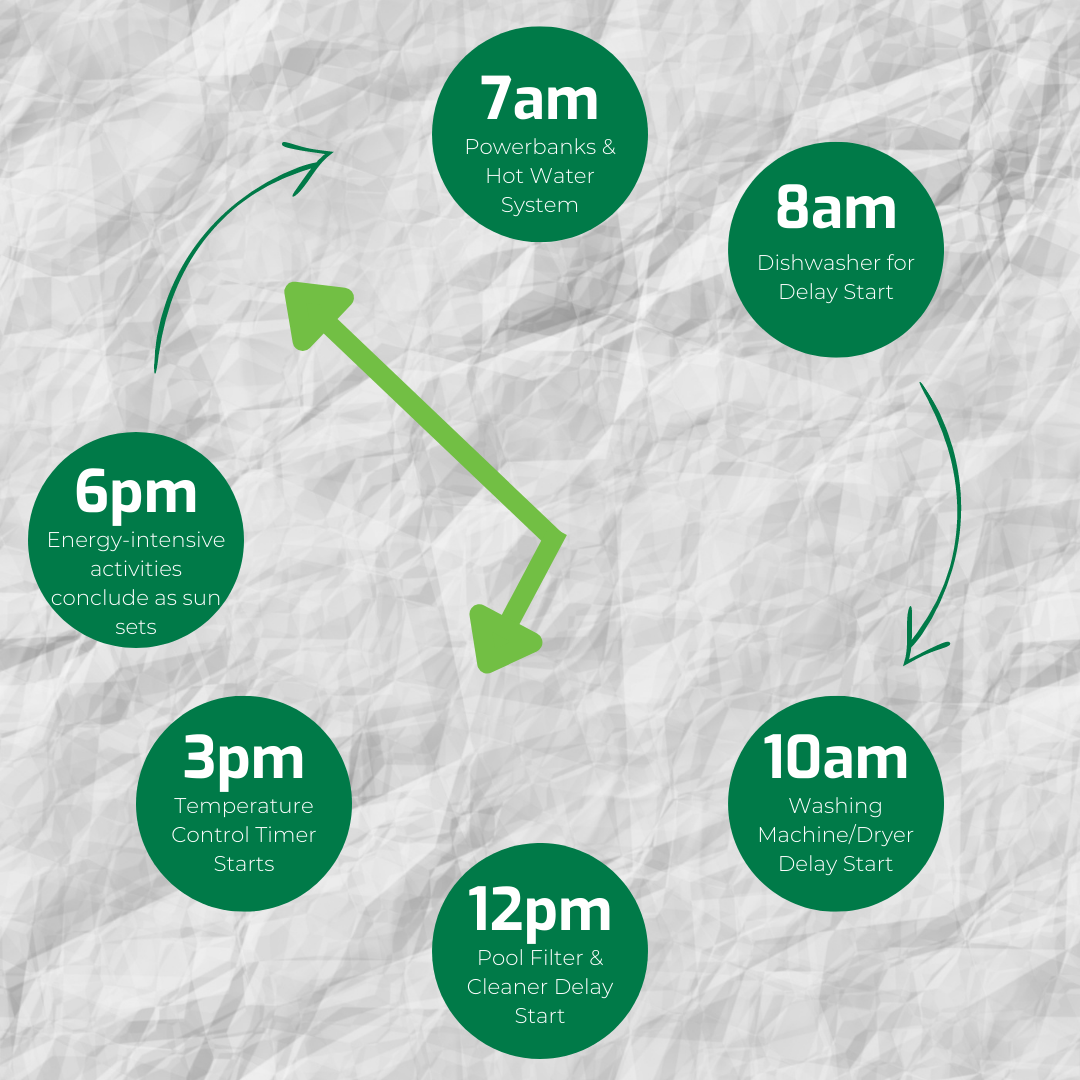
3. Eliminate demand charges and general usage kWh by installing a solar battery
Without a doubt, this electricity bill would see amazing returns from installing a solar battery. With their general usage rate so high, the payback period on a battery is reduced and the customer would have an excellent return on investment.
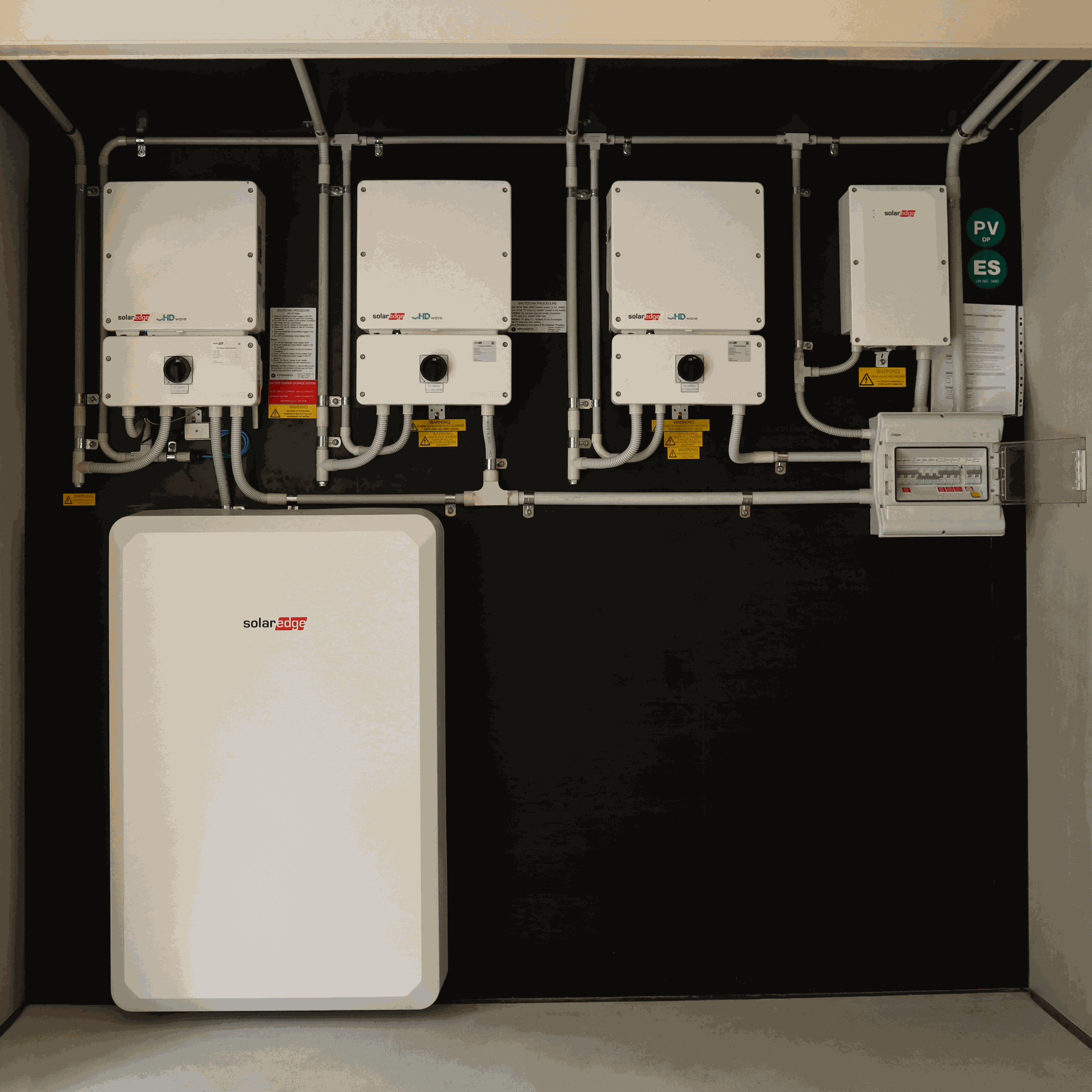
Springers Solar | Queensland's Most Experienced Solar Installer
Springers Solar provides quality components with proven performance, backed by industry-leading warranties, and dedicated after-sales support. Thousands of satisfied customers over more than 21 years of operation make Springers Solar one of the most established and experienced solar companies in Australia.
Springers Solar has received multiple awards for design and installation and is a certified/preferred installer for a large range of solar panel, inverter, and solar battery manufacturers, including Tesla, REC, and SolarEdge.
Our dedicated in-house team of electrical engineers, project managers, solar PV designers, solar installers and electricians work closely with you before, during, and long after your project is completed. Springers Solar offers an industry-leading 10-year workmanship warranty which is a testament to our qualified staff and offers you outstanding value and peace of mind.
Contact us about anything related to our services using the form below.
We'll get back to you as soon as possible.
- Springers Solar
- 704 Gympie Road
Lawnton QLD 4501
Australia - 07 3889 8898
- sales@springers.com.au
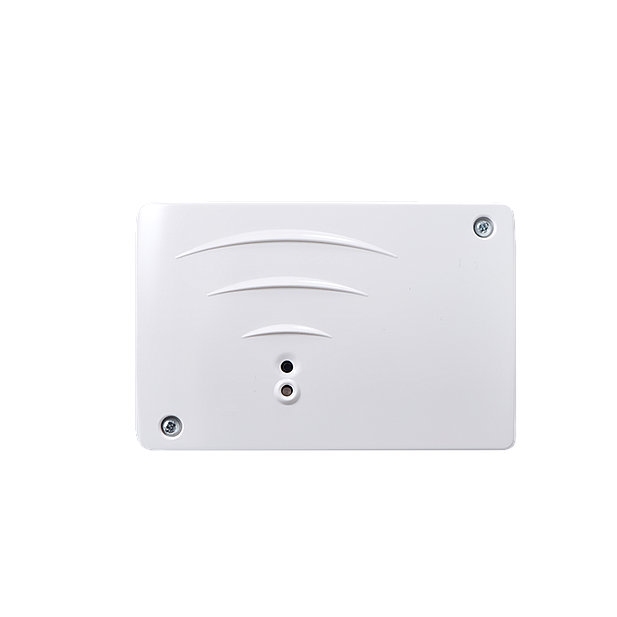
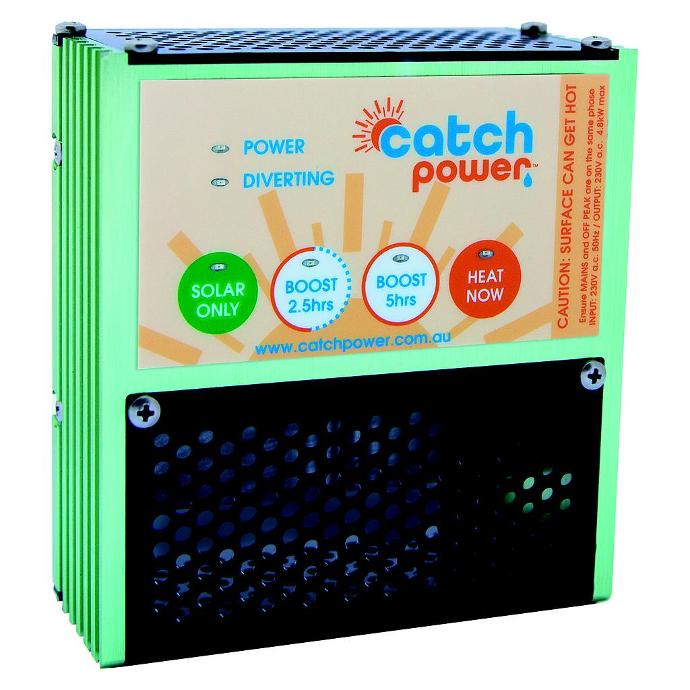
Electricity Bill Tariffs Explained: Flat Rates and Demand Charges